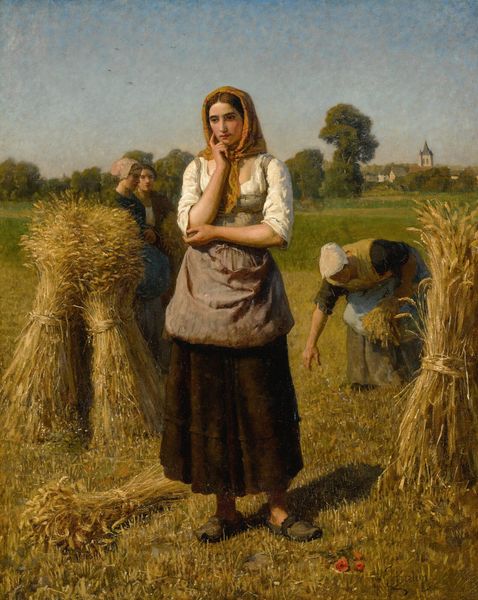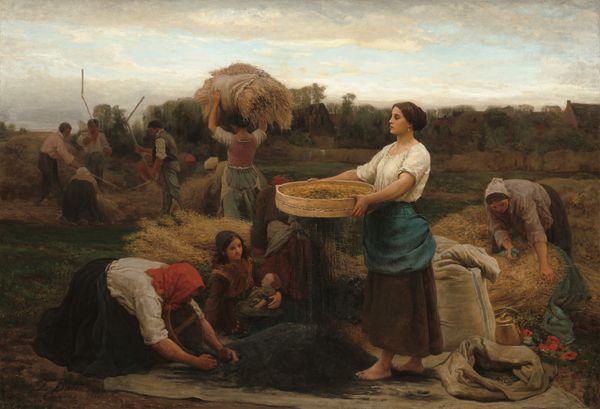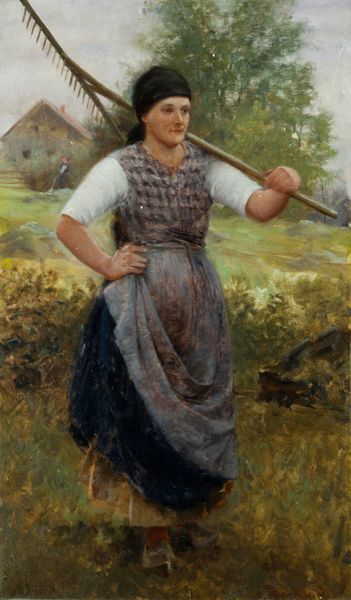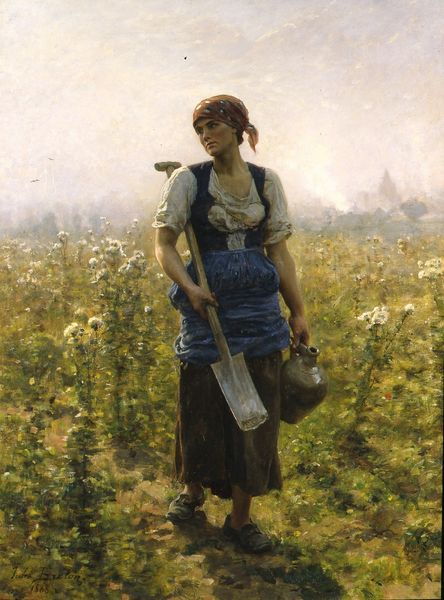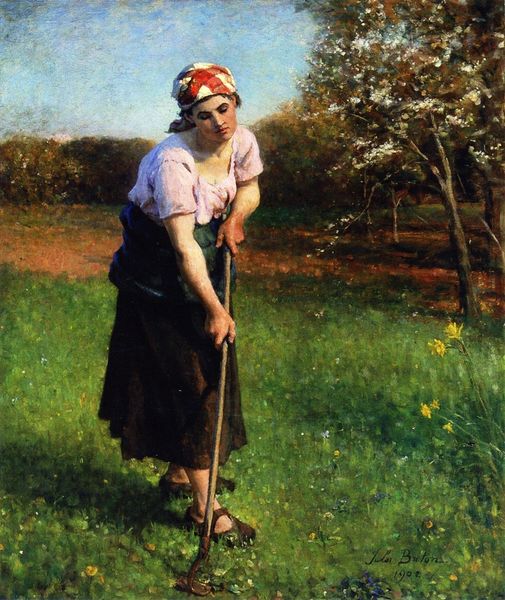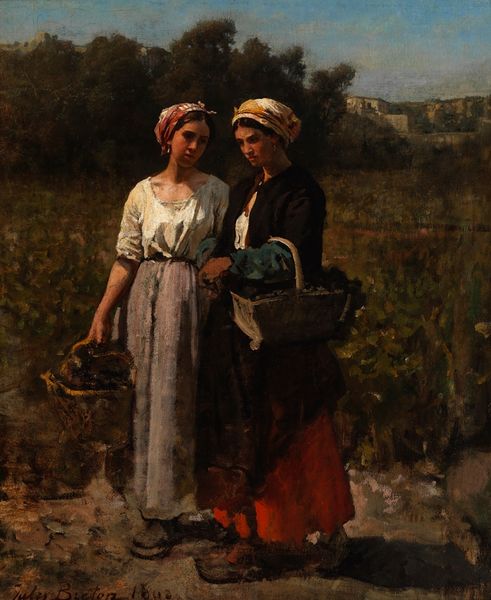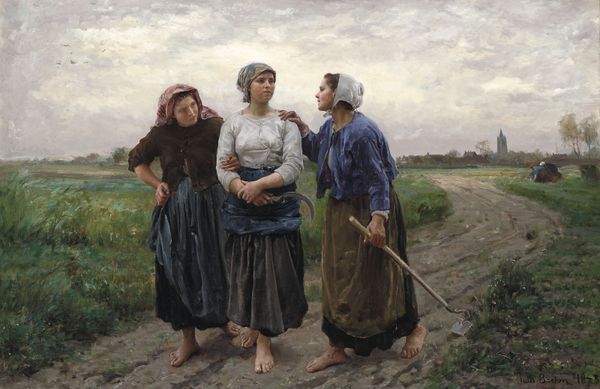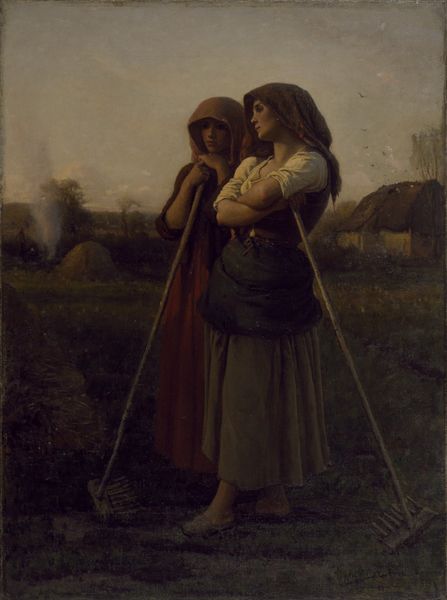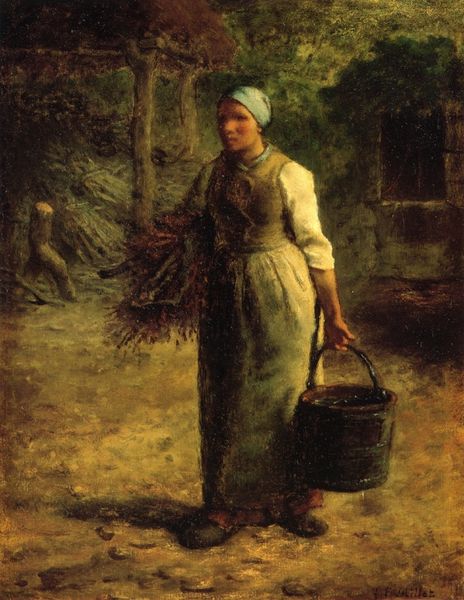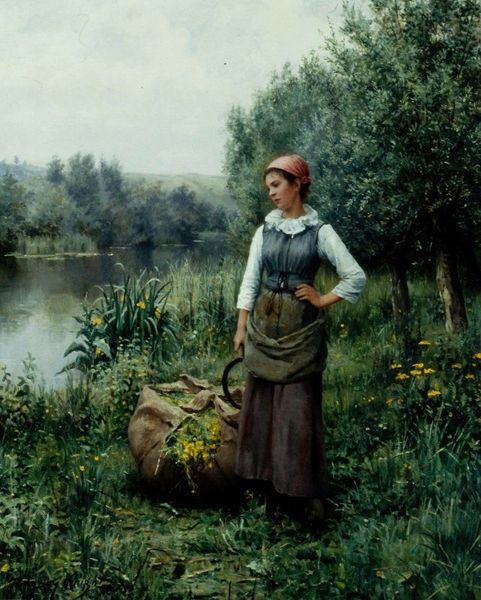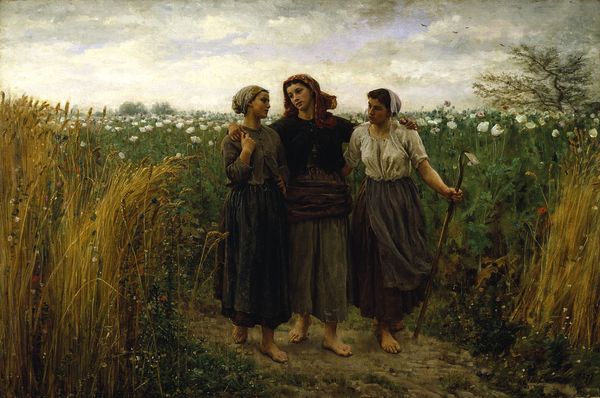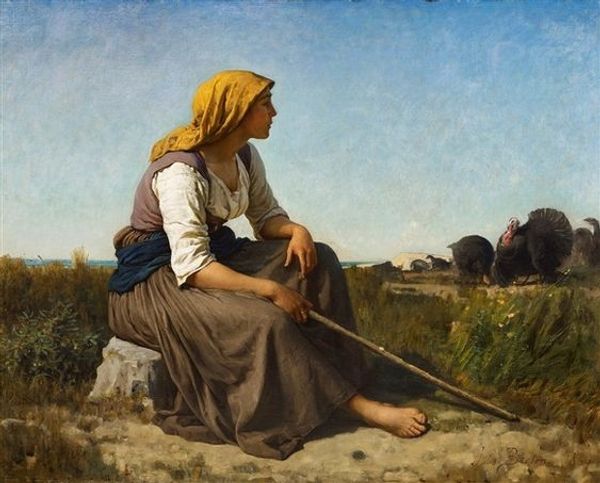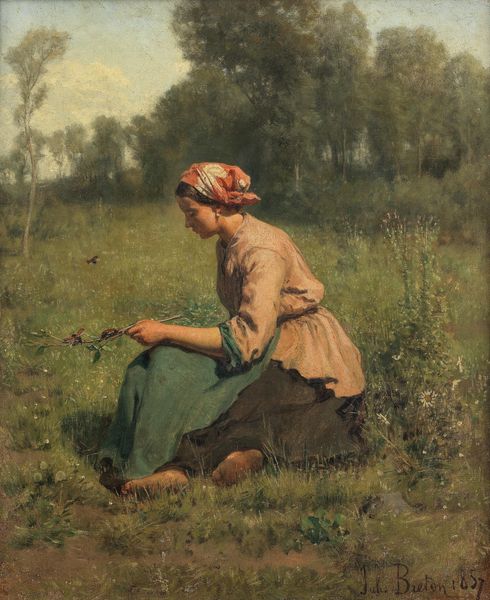
Dimensions: 81 x 66 cm
Copyright: Public domain
Curator: Jules Breton’s "Girl with a Rake," painted in 1859, offers us a glimpse into rural life in 19th-century France. It now resides here at the National Gallery of Ireland. Editor: My immediate impression is one of melancholic beauty. The muted colors and the girl's distant gaze create a very contemplative mood. There's a real stillness about the scene. Curator: Indeed. The formal composition guides the eye. Note the triangulation between the main figure, the other workers, and the landscape background; and also consider Breton’s subdued palette which reinforces a kind of serene solemnity. Editor: I see how the girl’s labor is framed as idealized—part of the charm for the burgeoning middle-class art market at the time, I imagine? What’s most striking to me is how her bare feet root her to the earth, a very deliberate connection to the means of production here. Also how interesting, considering academic artistic standards, that Breton foregrounds a scene of manual labor as high subject matter. Curator: Right. The labor, the harvesting, is only possible because of the physical toil – her feet touching that very dirt. It transcends pure symbolism and asks us to reflect on social hierarchy: whose labor is valued, and how? It subtly challenges the traditional divide. Editor: And it's worth considering the tools: the rake, obviously central, almost phallic; but also the materials making up the clothes. These choices lend the artwork its inherent texture. Consider what sort of lives are embodied by these garments and tools. Curator: These objects— the garments, the tools—speak to cycles of consumption as well, part of the material exchanges both on an economic level, but within family or the larger village too. Editor: It’s powerful to consider the layers of social context woven into the scene. Her longing look can now also express questions of worth and position. It's far more potent than a straightforward portrait. Curator: I concur. It makes me appreciate how Breton transcends pure observation here, touching something resonant within these universal struggles, both of labor and individual worth. Editor: Absolutely. It's those layers that remain so moving centuries later, don’t you agree?
Comments
No comments
Be the first to comment and join the conversation on the ultimate creative platform.
